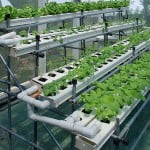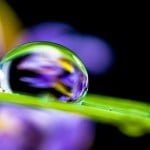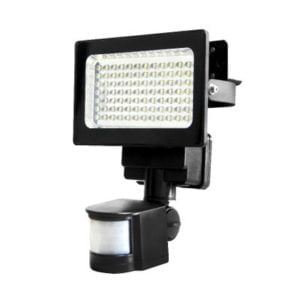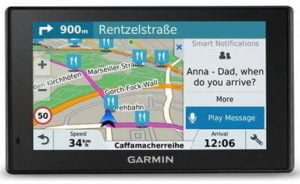There are Various Types of Hydroponic Systems
The types of Hydroponics DIY systems are, Water culture, Wick, Ebb and flow, Dripper, Aeroponic and Nutrient Film technique.
DIY homemade hydroponic systems must offer the following for optimal growth – Light, Air, Water, Nutrients, Heat and Room for the roots to spread.
Wick System:
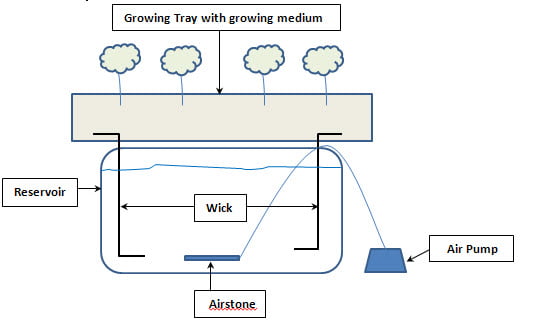
The Wick system is the simplest type of hydroponic system. It is a passive system as there are no moving parts. A Wick is used to draw the nutrient solution from a reservoir into the growing medium.
This system can use a variety of growing mediums. Perlite, Vermiculite, Pro-Mix and Coconut Fiber are among the most popular.
The draw back of the wick hydroponics system is that larger plants use large amounts of water and causes the nutrient solution to be used faster than the wicks can supply it.
Water Culture System:
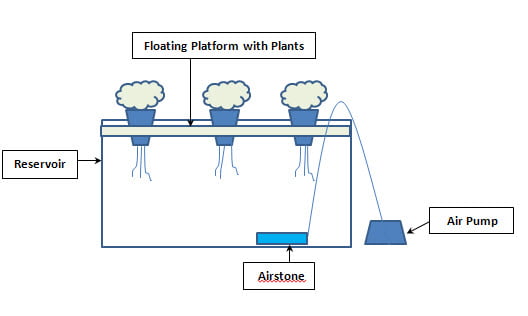
This is the simplist and most economical of all active hydroponic systems. Small to medium sized plants will grow best in a deep water culture. It is ideal for growing lightweight, leafy vegetables like lettuce, herbs and small peppers.
You can use a bin or fish tank as a reservoir. The water culture needs to supply the roots of the plants with enough oxygen to act as suitable growing medium. Your plants need access to the appropriate amount of water and nutrients.
Styrofoam is needed to hold your plants. A one inch thick piece will be adequate. Poke holes through it to place your net pots into. The Styrofoam with pots will be placed at the top of the reservoir, floating in the water.
You the have to mix the appropriate amounts of nutrients into the water. These nutrients contain nitrogen, phosphorus, potassium, calcium and other elements and minerals.
You can purchase premixed solutions. These nutrients contain all of the needed properties similar to soil which allows for your plants to successfully grow.
To accurately measure the pH levels in your plants you will need a pH test kit. This is very important in hydroponic gardening.
Monitoring of these plants are needed as the pH of a nutrient solution reads the outcome of an electrical encounter that happens between the plants roots and everything that surrounds them.
An air pump is also a important part of a hydroponic system. It supplies air to the air stone. The air stone (or bubbler) which will be placed at the bottom of your reservoir will bubble and supply oxygen to the roots of the plants.
Last but most important is water. Water will keep the plants alive. The plants will be strong and sturdy. Most of these items can be found around the house and online.
The draw back of this system is that it doesn’t work well with large plants or with long-term plants.
Ebb & Flow (Flood and Drain):
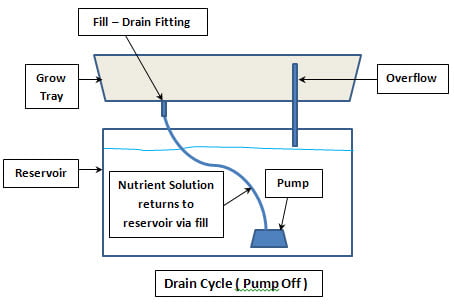
With the Ebb and Flow the grow trays are temporarily flooded with nutrient solution and then draining the solution back into the reservoir.
A submersible pump that works on a timer will flood and drain the trays. This action is normally done with a submerged pump that is connected to a timer.
The timer switches the pump on and nutrient solution is pumped into the grow trays. After a few minutes the timer switch the pump off, the draining starts and the nutrients flow back into the reservoir.
This cycle repeats several times a day depending on the size and type of plants, temperature, humidity and the type of growing medium used.
The Ebb & Flow is a system that can be used with a range of growing mediums. The entire grow tray can be filled with grow rocks, gravel or granular Rockwool.
The disadvantage of this system is a vulnerability to power outages as well as pump and timer failures. The roots then dry out when the watering cycles are interrupted.
Drip Systems (Recovery – Non recovery):
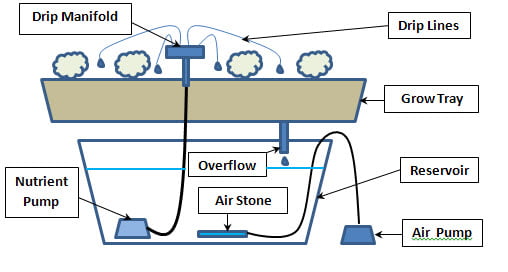
This is the most used type of hydroponic system in the world. It’s operation is simple. A timer controls a submersed pump. As soon as the timer turns on the pump, nutrient solution is dripped onto the base of each plant by a small drip line.
With the Recovery Drip System the excess nutrient solution that runs off is collected back in the reservoir for re-use. The Non Recovery System does not collect the run off.
The recovery system uses the nutrient solution more efficiently, as excess solution is reused. It allows for the use of a more inexpensive timer due to the fact that a recovery system doesn’t require precise control of the watering cycles.
The non-recovery system needs a precise timer so that watering cycles can be adjusted to insure that the plants get enough nutrient solution and to keep the runoff to a minimum.
The non-recovery also requires minimum maintenance as the the excess nutrient solution isn’t recycled back into the reservoir. Thus the nutrient strength and pH of the reservoir will be more constant.
You can fill the reservoir with pH nutrient solution and then forget it until you need to mix more. A recovery system have large shifts in the pH and nutrient strength levels that calls for periodic checking.
N.F.T. (Nutrient Film Technique):
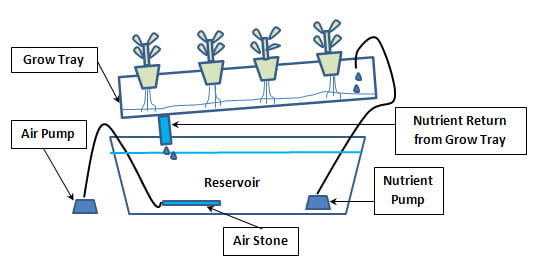
This kind of hydroponic system have a constant flow of nutrient solution and no timer is required for the submersible pump.
The nutrient solution is pumped into the growing tray via a tube and flows over the roots of the plants. The nutrients then drains back into the reservoir.
No growing mediun is required other than air. The plants are supported in a plastic basket with the roots dangling into the nutrient solution.
N.F.T. systems are susceptible to power outages and pump failures. The roots can dry out very rapidly when the flow of nutrient solution is interrupted.
Aeroponics:
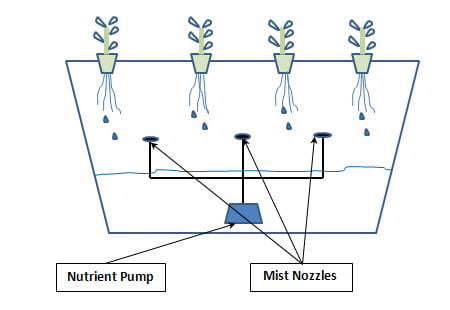
The Aeroponic system is the most high-tech type of hydroponics. Like the Nutrient Film Technique the growing medium is primarily air. The roots also hangs in the air and are then misted with the nutrient solution.
The mistings are done more often – usually every few minutes. Due to the roots being exposed to the air , there is the possibility that the roots will dry out rapidly if the misting cycles are interrupted for long intervals due to power failure.
A timer controls the nutrient pump much like other types of hydroponic systems. The Aeroponics system needs shorter cycles to spray the mist than other Hydroponic systems. It can vary from cycles of a few seconds to a few minutes.


